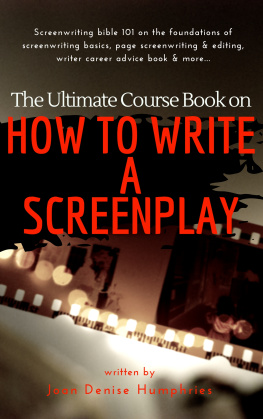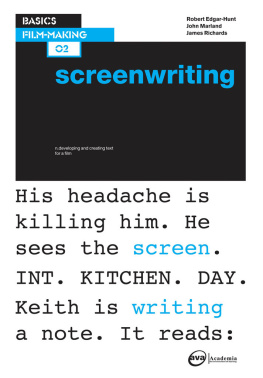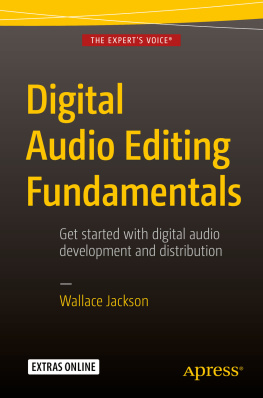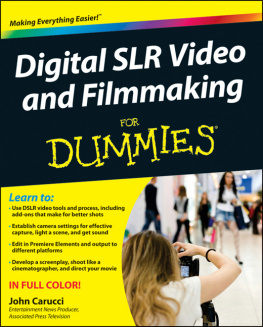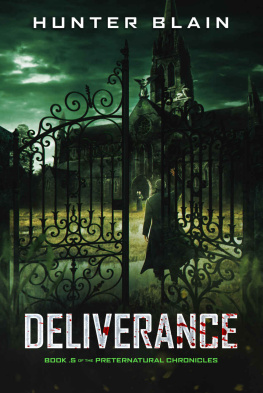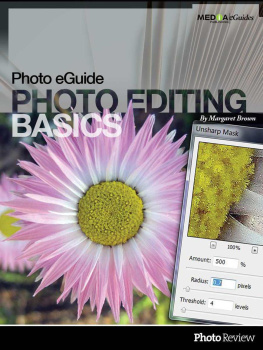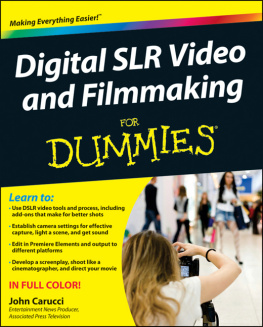All films are about storytelling. Even films that are purely visual have some kind of story to tell. It is a basic human instinct to respond to a narrative story. Narrative refers to a sequence of events in verbal, written or picture form that are put together in a way that tells a story. Features and short films are narrative fiction. A documentary is narrative nonfiction. Reality shows are narrative fiction constructed from bits of non-fiction.
In filmmaking we are in the business of telling stories with pictures. Now of course this is a simplification: most films use dialog, music, titles, subtitles and other media to tell the story, but the visual images are fundamental to filmmaking: without them were really just making radio. Its an old saying that a film is well made if you can turn off the sound and still have a pretty good idea of what is going on. In the end, it really doesnt matter if the visuals or the dialog are the stronger element what really matters is that you are telling a good story.
So what makes a good story? Many very wise people have analyzed and thought about what makes good film stories and they have almost all come to agree on certain basic elements that are essential to film narrative. Well talk about those basic elements in this chapter.
There is a good deal of confusion about the difference between plot and story. Many people think they are the same thing, but they arent at all. Plot is the sequence of events that occur in the narrative. This happened, and then that happened. It is possible to have a plot with tons of action and it turns out to be a boring screenplay most often this is because the story isnt engaging and interesting. What is story as opposed to plot? The most famous example is this: The Queen died, then the King died. That is plot . One thing occurs and then something else occurs. Two events, one after the other nothing more.
There are a million ideas in a world of stories. Humans are storytelling animals. Everythings a story, everyones got stories, were perceiving stories, were interested in stories. So to me, the big nut to crack is how to tell a story, whats the right way to tell a particular story.
Richard Linklater (Dazed and Confused, Before Sunrise)
THE QUEEN DIED, THEN THE KING DIED
Here is a story : The Queen died and then the King died of grief. What is the difference? Very simple: causation. We see how they are connected; how one thing caused the other. Its heart wrenching; not only do we see how the two events are connected, we also experience the sadness of a King so heartbroken by the death of his Queen that he simply cant go on living without her.
You need both: you really cant tell a story without plot it is the sequence of events that tells the story, but dont get so caught up in the details of the plot that you forget to tell your basic story. Think of it this way: a story can be summed up in a few sentences, whereas to tell a plot you have to start at the beginning and recite every major event that takes place, beginning to end.
As a student or a beginning filmmaker, you are most likely going to start by making short films. The concepts we are presenting here apply to all types of narrative filmmaking, but there are some differences in a short film. The obvious one is that you have much less time to establish characters, set up the situation, introduce the conflict, and then resolve it.
You have to be efficient in laying these building blocks, getting right to the point, and making sure each and every scene is necessary and does its job of introducing the character, showing the action, and moving the story along. This is why making short films is important to learning filmmaking it gets down to the basics, the key elements of storytelling and forces you to carefully consider the need for each scene, each character, each location. These skills will serve you well when you move up to longer form filmmaking.

Figure 1.1. Conflict is fundamental to stories. There are many types of conflict that propel a story forward.
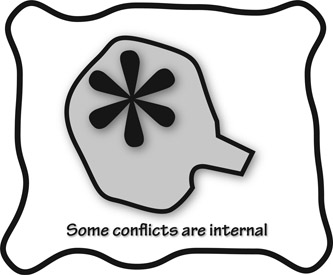
Figure 1.2.Really interesting characters often have an internal conflict: some mental turmoil that they have to deal with in addition to the external conflicts of the story.
There is one thing that is absolutely fundamental to storytelling: conflict. If there is no conflict, there is no story, its really as simple as that. Conflict in the story is sometimes referred to as trials and tribulations, or the ring of fire. No good story can exist without some conflict the hero or heroine has to face and overcome. These troubles are part of the rite of being the main character. This character should undergo some kind of change or transformation, and the conflicts he or she faces is what causes this change. Conflict is the obstacle or obstacles that stand in our heros way, and essential to any great film, drama or comedy. These conflicts or obstacles can be external, internal, or both. No matter what the kind of conflict the character faces, it is essential that they eventually confront them. If the character spends the whole movie just avoiding conflict, how boring is that?
Some conflicts are big and obvious: Neo fights the Agents inside The Matrix. Austin Powers battles Dr. Evil, Batman battles the Joker. These are large external conflicts: the main character has someone or something that they have to fight against.
External conflicts might be person vs. person, person vs. society (Scarface), person vs. machines (Terminator) or people vs. zombies (lots of movies). It might even be person vs. supernatural (The Lost Boys) or person vs. monster (Alien).
Usually, we combine internal and external conflicts for a richer story. That means we have to understand how our characters approach and resolve conflict.
Jami Gold (Using Conflict to Understand Our Characters)
Some external conflicts are small and confined: Vinny in My Cousin Vinny has to win the case by fighting the local district attorney in court while also overcoming the objections of the stern judge and also trying to maintain his relationship with his girlfriend multiple conflicts; one of the things that makes it such a good story.
When our main character is faced with conflict and opposition, either from the antagonist or elsewhere, they have to confront this opposition. Without confrontation, our protagonist would be just a victim who surrenders not a very interesting type.
Sometimes, the basic conflict of the story is internal it is something inside the main character that he or she has to overcome by themselves or with help. Think of the Bill Murray character in Groundhog Day. In the beginning, he is totally selfish and self-centered, he doesnt care about anybody but himself. These are internal conflicts within his own personality. It is only when he overcomes these internal problems and discovers the joy of being nice to other people that he is able to stop living the same day over and over again. You might think of the fact that he cant escape from living the same day over and over again as his conflict but its really just a plot device that forces him to deal with his internal conflicts.
Another example is Sgt. Riggs in the first


